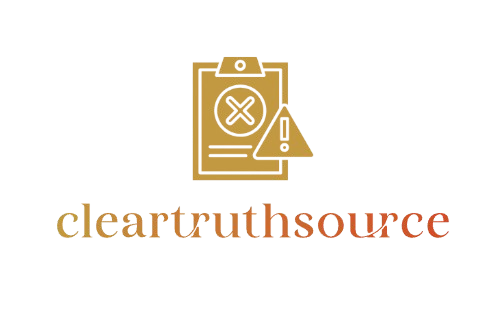Political parties are like the ultimate social clubs, only instead of sipping cocktails and discussing the latest Netflix series, they’re debating policies and plotting world domination. They rally people around shared beliefs, aiming to influence governance and shape society. But what really defines a political party? Is it the charismatic leader, the catchy slogans, or the ability to throw a good barbecue?
In a world where everyone seems to have an opinion, political parties serve as the megaphone for collective voices. They organize supporters, craft manifestos, and sometimes even manage to agree on which way is up. Understanding what best describes a political party isn’t just a matter of political science; it’s about grasping the pulse of democracy itself. So buckle up, as we dive into the colorful world of political parties and uncover what makes them tick.
Overview of Political Parties
Political parties serve as crucial elements within democratic systems. They organize individuals around shared roles, beliefs, and objectives, shaping the political landscape.
Definition of a Political Party
A political party is an organized group that seeks to gain governmental power through elections. Members typically share similar political ideologies and policy goals. Political parties mobilize voters, formulate policies, and nominate candidates for public office. Some also play a significant role in legislative processes by promoting specific agendas. These entities function as intermediaries between the electorate and the government, enhancing representation and participation in the political process.
Importance of Political Parties in Democracy
Political parties enhance democratic engagement by providing voters with choices in elections. They facilitate the representation of diverse interests and viewpoints within society. Political parties help to organize political discourse, making it easier for citizens to understand issues. They also contribute to the stability of the political system by creating frameworks through which political competition occurs. Effective political parties can lead to better governance, as they enable accountability and responsiveness to the needs of the electorate.
Characteristics of Political Parties

Political parties exhibit several key characteristics that define their functions and roles within democratic systems. Understanding these elements helps clarify their impact on political discourse and governance.
Organization and Structure
Political parties possess distinct organizational frameworks that facilitate their operation. Hierarchical structures often encompass local chapters, regional branches, and national leadership. Each level plays specific roles and maintains communication channels to enable efficient decision-making. Membership often includes diverse individuals who share common goals, ensuring representation from various social sectors. Political parties also establish committees responsible for candidate selection, policy development, and member engagement. These structures promote coordination, enabling parties to strategize effectively during elections and legislative sessions.
Ideologies and Platforms
Political parties are fundamentally rooted in specific ideologies that shape their platforms. Ideologies guide parties in articulating positions on issues like healthcare, education, and foreign policy. Each party formulates a platform that outlines its principles and proposed solutions, addressing the concerns of its constituents. These platforms often reflect broad political traditions, such as conservatism or liberalism, influencing voters’ choices. Through parties’ platforms, they communicate their values and objectives, helping voters understand the implications of their policy proposals. Diverse ideologies within a political ecosystem enrich democratic deliberation and foster meaningful debate.
Types of Political Parties
Political parties can be categorized based on their influence and focus. Understanding these categories helps clarify the role each party plays in the political landscape.
Major Parties vs. Minor Parties
Major parties dominate the political system, typically attracting the most voters. In the United States, the Democratic and Republican parties exemplify major parties, holding significant power in elections and governance. They shape policies and drive the national political agenda, ensuring their interests influence legislative processes. Minor parties, in contrast, exist on the fringes. Often referred to as third parties, they struggle for recognition and representation. While minor parties can introduce new ideas, their impact on overall elections remains limited. However, they can influence major parties by drawing attention to overlooked issues.
Single-Issue Parties
Single-issue parties focus on one specific area of policy or concern. Environmental issues, for instance, drive the Green Party’s platform, advocating for sustainable practices and climate action. Voters who prioritize a particular concern often find a voice in these parties. Their influence can be notable during elections, as they educate the public about specific subjects. However, political clout for single-issue parties is typically confined to niche audiences. While they can push major parties to address certain topics, their broader electoral success is often challenging.
Evaluating Political Parties
Understanding political parties involves examining various criteria to assess their effectiveness and influence in the political landscape.
Criteria for Assessment
Key criteria for evaluating political parties include organization, ideology, and voter engagement. Organization reflects how well a party mobilizes members and disseminates information. Ideology shapes policy positions and aligns with voters’ values. Voter engagement indicates a party’s ability to connect with the electorate through outreach efforts. Additionally, effectiveness in elections showcases a party’s appeal and operational strength. Transparency in decision-making also affects public trust. Each criterion provides insight into a party’s capacity to represent constituents within democratic frameworks.
Case Studies of Successful Parties
Several political parties have demonstrated successful strategies, illustrating effective practices. The Democratic Party in the United States has harnessed broad coalitions to mobilize voters, emphasizing inclusivity. The Republican Party often focuses on economic policies, attracting business-oriented constituents. In Canada, the Liberal Party exemplifies adaptability, responding to changing public priorities while maintaining core principles. The Green Party, though smaller, has cultivated a dedicated base around environmental issues, influencing mainstream dialogue. Each of these examples highlights unique approaches that contribute to their sustained relevance and impact in political systems.
Conclusion
Political parties serve as vital components of democratic systems. They not only organize individuals around shared beliefs but also facilitate meaningful discourse and representation. By understanding their structures and roles, one gains insight into the dynamics that shape political landscapes. Recognizing the influence of both major and minor parties enriches the conversation about democracy and governance. As these entities evolve, they continue to adapt to the changing needs and values of society, ensuring their relevance in the political arena. Engaging with political parties allows citizens to participate actively in shaping their communities and influencing the future.

